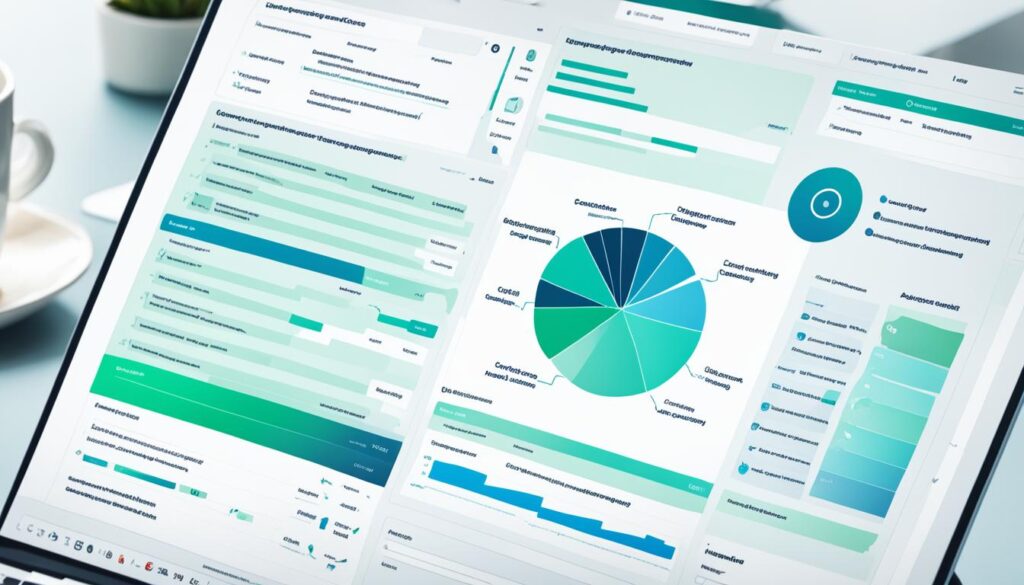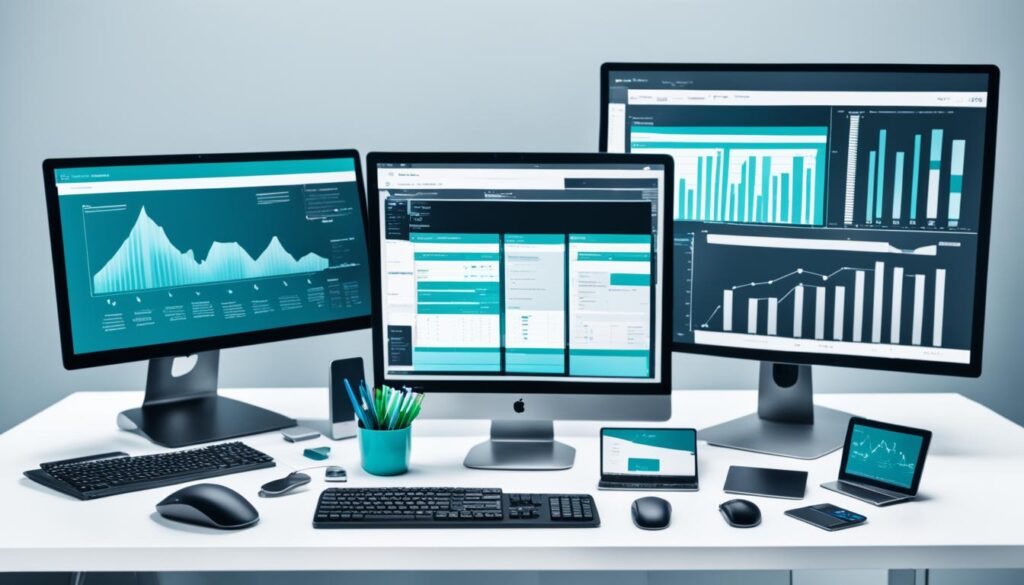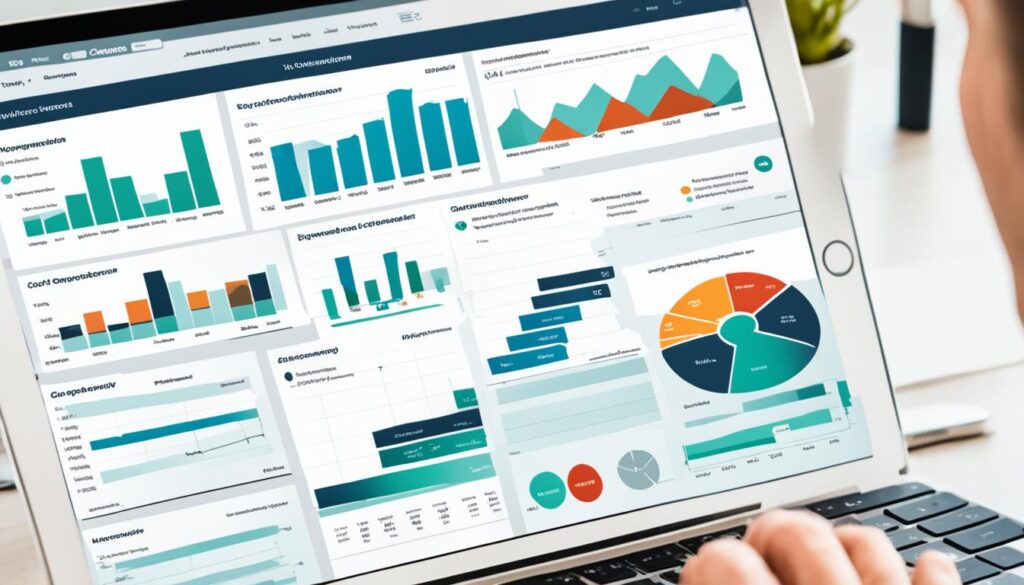Looking for efficient asset management solutions? Look no further than ServiceNow. Our comprehensive Asset Management Demo provides organizations with valuable insights and solutions to streamline their IT operations and optimize the lifecycle of their assets. Whether you need to manage inventory, stockrooms, or contracts, our demo is designed to cater to your asset management needs.
At ServiceNow, we understand the importance of effective asset management and the impact it can have on your business. That’s why our demo showcases the power of our asset management services and solutions, helping you gain better control over your assets and enhance operational efficiency.
By leveraging our demo, you can experience firsthand how our asset management tools can benefit your organization. From standardizing asset data to improving decision-making through real-time insights, our solutions enable you to make informed asset management decisions. With mobile asset management functionality, you can conveniently manage assets on the go, enhancing flexibility and productivity.
Don’t miss out on the opportunity to optimize your asset management processes. Start exploring our Asset Management Demo today to unlock the full potential of your assets.
The Benefits of Asset Management
Asset management offers several benefits for organizations. By effectively managing their assets, businesses can enhance their operational efficiency and make informed decisions. Let’s explore the key advantages of asset management:
1. Enhanced Control and Visibility
Asset management tools empower organizations to gain better control and visibility over their assets. With automated tracking and monitoring, businesses can easily locate and manage their assets, minimizing the risk of loss or theft. This enables smooth daily operations and reduces the time spent searching for assets.
2. Standardized Asset Data
Asset management services facilitate the standardization of asset data, ensuring consistency and accuracy. By creating a unified and structured asset repository, organizations can efficiently track and manage their assets. This standardized data enables better decision-making and ensures that all stakeholders have access to up-to-date information.
3. Improved Efficiency with Mobile Asset Management Tools
Asset management solutions provide mobile tools that enable on-the-go asset management. These tools allow employees to record asset information, conduct audits, and track asset movements using their mobile devices. By eliminating manual processes and enabling real-time updates, organizations can enhance their efficiency and reduce human errors.
“Mobile asset management tools have revolutionized the way we manage our assets. With just a few taps on our smartphones, we can track assets, update information, and perform audits, saving us valuable time and resources.” – John Smith, IT Manager at XYZ Corporation
4. Cost Savings and Optimization
Effective asset management enables organizations to optimize their asset utilization and reduce unnecessary expenditures. By monitoring asset usage, organizations can identify underutilized assets and determine if they can be repurposed or disposed of. This optimization helps businesses save costs and make the most of their existing assets.
5. Compliance and Risk Mitigation
Asset management tools provide organizations with improved compliance and risk mitigation capabilities. By tracking asset warranties, licenses, and maintenance schedules, businesses can ensure that assets are properly maintained and meet regulatory requirements. This mitigates the risk of non-compliance, potential penalties, and operational disruptions.
Implementing asset management solutions can bring numerous benefits to organizations, ranging from enhanced control and visibility to improved efficiency and cost savings. By leveraging asset management tools and services, businesses can optimize their asset lifecycle and streamline their operational processes.
Key Features of Asset Management
Asset management solutions offer a range of features that empower organizations to efficiently manage their assets. Whether it’s tracking and monitoring inventory, streamlining procurement processes, or gaining real-time insights into asset operations, these features provide the tools organizations need to optimize asset management. Let’s explore some key features that make asset management software a valuable asset for businesses.
Mobile Asset Receiving
One of the key features of asset management software is mobile asset receiving. With this capability, organizations can easily record and track asset arrivals using mobile devices. By scanning barcodes or reference numbers, assets can be quickly identified and added to the system. This feature eliminates the need for manual data entry, reducing errors and saving time.
Asset Procurement
Effective asset procurement is crucial for organizations to ensure they have the necessary resources to meet their operational needs. Asset management software offers streamlined procurement processes, allowing organizations to request assets, manage purchase orders, and track vendor information. This feature improves efficiency, enhances communication with suppliers, and reduces procurement-related delays.
Contract Management
Managing contracts is essential for organizations to stay compliant and maximize their asset value. Asset management software includes contract management features that enable organizations to store and centralize contract information. This allows for easy access to contract terms, expiry dates, and renewal reminders. By having a clear overview of contract details, organizations can effectively manage contractual obligations and minimize compliance risks.
Reports and Dashboards
Clear visibility into asset performance and status is vital for effective decision-making. Asset management software provides robust reporting and dashboard functionalities that allow users to generate custom reports, track asset utilization, and monitor maintenance activities. These insights help organizations identify inefficiencies, optimize asset utilization, and make data-driven decisions to improve operational performance.
Inventory Management
Efficient inventory management is critical for organizations to have accurate control over their assets. Asset management software offers comprehensive inventory management features, allowing organizations to track asset volumes, generate stockroom or warehouse audits, and automate stock replenishment processes. With these features, organizations can minimize inventory discrepancies, avoid stockouts, and optimize inventory levels.
Now that we’ve explored some of the key features of asset management software, it’s evident that these solutions provide the necessary tools for organizations to efficiently manage their assets, streamline processes, and make informed decisions. By leveraging asset management software, organizations can unlock the full potential of their assets and achieve optimal operational efficiency.

Types of IT Asset Management
IT asset management is a crucial practice for organizations to effectively track and manage their assets. There are four main types of IT asset management, each focusing on specific types of assets:
-
Hardware and Software Asset Management
This type of asset management involves the tracking and management of physical hardware assets like computer systems, servers, and network devices, as well as software licenses and installations. It ensures that organizations have accurate inventory records, optimize hardware and software usage, and comply with licensing agreements.
-
Cloud Asset Management
Cloud asset management focuses on managing cloud-based assets, including virtual machines, cloud storage, and software-as-a-service (SaaS) subscriptions. It helps organizations track and optimize their cloud resource usage, control costs, and ensure proper governance and security measures are in place.
-
Digital Asset Management
Digital asset management involves the management of digital content such as documents, images, videos, and creative assets. It enables organizations to organize, store, search, and distribute digital assets efficiently. Digital asset management helps improve collaboration, streamline workflows, and ensure consistent branding and content management.
-
Fixed Asset Management
Fixed asset management focuses on managing physical assets that are typically non-consumable and have longer lifecycles, such as desks, chairs, and printers. It involves tracking asset locations, maintenance schedules, depreciation, and ensuring compliance with regulations. Fixed asset management helps organizations optimize asset utilization, reduce costs, and streamline maintenance processes.
Each type of IT asset management plays a crucial role in helping organizations effectively track, manage, and optimize their assets, ensuring proper utilization, cost control, and compliance.
The Core Components of ServiceNow IT Asset Management
Effective asset management is essential for organizations to optimize the lifecycle of their assets. ServiceNow IT Asset Management provides core components that enable seamless asset tracking and informed decision-making.
Physical Details
One of the crucial components of ServiceNow IT Asset Management is capturing and managing physical details of assets. This includes assigning barcodes and references to easily identify and track assets throughout their lifecycle.
Financial Details
ServiceNow IT Asset Management also allows organizations to efficiently manage the financial aspects of assets. It enables the recording of purchase order numbers and costs, providing a comprehensive view of asset investments and expenditures.
Licensing and Contractual Information
Managing licensing and contractual information is another vital component of ServiceNow IT Asset Management. This feature allows organizations to keep track of software licenses, contract terms, and renewal dates, ensuring compliance with licensing agreements and avoiding legal issues.
By utilizing these core components, organizations can effectively monitor and manage their assets throughout their entire lifecycle. These components provide the necessary information and tools to make informed decisions regarding asset usage, maintenance, and replacement.
Let’s take a closer look at the benefits of utilizing asset management tools and a demo of the ServiceNow asset management system to see how it can transform your asset management processes.

The IT Asset Lifecycle
In asset management, it is crucial to understand the various stages of the IT asset lifecycle. From acquisition to disposal, assets go through a series of processes, each requiring careful management and tracking. By utilizing asset management tools, such as ServiceNow, organizations can effectively navigate and optimize the lifecycle of their assets.
-
Asset Request
It all begins with an asset request. When a need arises, users can submit a request for a specific asset, whether it’s hardware, software, or other IT resources. With asset management tools, organizations can streamline this request process, ensuring timely approvals and efficient allocation of assets.
-
Procurement
Once an asset request is approved, the procurement process begins. This involves identifying the best procurement method, whether it’s purchasing, leasing, or partnering with vendors. Asset management tools simplify the procurement process by automating purchase orders, tracking deliveries, and managing vendor relationships.
-
Receiving and Provisioning
After procurement, assets are received and provisioned to the end-users. Asset management tools enable organizations to accurately track assets upon receipt, ensuring they are assigned to the appropriate users and properly configured for use.
-
Usage and Transfer
During the usage phase, assets are utilized by end-users to perform their daily tasks. Asset management tools provide visibility into asset usage, allowing organizations to monitor performance, track software licenses, and ensure compliance with usage policies. In cases where assets need to be transferred between users or departments, these tools facilitate seamless transfer processes.
-
Repairs and Maintenance
Assets may require repairs or maintenance throughout their lifecycle. Asset management tools help organizations track maintenance schedules, create service tickets, and coordinate repairs with vendors or internal repair teams. This ensures that assets remain in optimal condition, minimizing downtime and maximizing productivity.
-
Disposal
When an asset reaches the end of its useful life, proper disposal is essential. Asset management tools aid in the decommissioning and disposal process, facilitating the removal of assets from the inventory, ensuring data privacy and security measures, and disposing of the assets in an environmentally responsible manner.
By utilizing asset management tools throughout the IT asset lifecycle, organizations can effectively track, manage, and optimize their assets, ensuring they are properly utilized and providing the maximum value to the business.
| Stage | Key Processes |
|---|---|
| Asset Request | Submission and approval of asset requests |
| Procurement | Purchase orders, vendor management |
| Receiving and Provisioning | Asset receipt, user assignment |
| Usage and Transfer | Asset usage monitoring, inter-department transfers |
| Repairs and Maintenance | Maintenance scheduling, repairs coordination |
| Disposal | Decommissioning, data security, environmentally responsible disposal |

Inventory Management
Inventory management plays a crucial role in effective asset management. It involves diligently tracking and documenting the inventory of hardware and consumable assets within stockrooms or warehouses. At ServiceNow, we understand the importance of inventory management in maintaining accurate records and optimizing asset utilization.
Our asset management tools include robust inventory management features that empower organizations to efficiently manage their asset volumes. With our solution, you can effortlessly conduct audits, ensure inventory accuracy, and automate stock replenishment processes.
Streamline Stock Replenishment
With our asset management solutions, you can automate the stock replenishment processes, ensuring that critical assets are always available when needed. By setting up automated triggers and notifications, you can streamline the replenishment process, saving time and mitigating the risk of running out of essential items.
Our system keeps track of inventory levels, sending alerts when stock levels fall below designated thresholds. This functionality enables you to proactively initiate the restocking process, maintaining a constant supply of assets, and minimizing disruptions to your operations.
Maintain Accurate Inventory Records
Accurate inventory records are essential for optimizing asset management and minimizing errors. With ServiceNow’s asset management tools, you can easily track and update inventory records, ensuring up-to-date information at all times.
Our system allows you to register incoming assets, record outgoing assets, and track their movement within your organization. With real-time data and robust reporting capabilities, you can make data-driven decisions regarding asset allocation, repairs, and disposal.
Efficient Auditing and Compliance
Regular audits are critical to maintaining compliance and ensuring accurate inventory records. ServiceNow’s asset management solutions provide comprehensive auditing functionalities, enabling you to conduct regular audits with ease.
Our system generates audit reports that provide insights into inventory accuracy, asset utilization, and compliance with internal policies and external regulations. This information empowers you to identify discrepancies, implement corrective measures, and ensure compliance with regulatory requirements.
“Inventory management is key to achieving accurate asset records and optimizing asset utilization. With ServiceNow’s asset management solutions, organizations can streamline stock replenishment, maintain accurate inventory records, and efficiently conduct audits for compliance.”
Efficient inventory management is an integral part of effective asset management. With ServiceNow’s asset management solutions, you can confidently track, manage, and optimize your asset inventory. By leveraging our comprehensive tools, organizations can enhance operational efficiency, mitigate risks, and achieve better control over their assets.
Financial Management
Financial management plays a crucial role in asset management, offering organizations the ability to optimize budgets and reduce costs. With our asset management system demo, you can effectively track and manage the financial aspects of your assets, including purchase orders, costs, and budget allocations.
By having a comprehensive understanding of your assets’ financial data, you can make informed decisions that drive efficiency and cost savings. Our asset management solution empowers you to forecast compliance and governance, ensuring that your organization adheres to relevant policies and regulations.
With our asset management tools and software, you can streamline your financial management processes and gain visibility into the financial impact of your assets. By leveraging this information, you can optimize your budget allocation, identify cost-saving opportunities, and improve overall financial performance.
“Our asset management system demo enables organizations to track and manage their assets’ financial aspects, empowering informed financial decision-making and ensuring policy adherence.”
Key Benefits of Financial Management in Asset Management
- Optimized budget allocation: By accurately tracking and managing financial aspects, you can allocate resources more effectively, optimizing your budget.
- Cost reduction: Identifying cost-saving opportunities through in-depth financial analysis enables you to reduce expenses and improve your organization’s overall financial performance.
- Compliance and governance: By forecasting compliance and governance, you can ensure adherence to policies and regulations, minimizing risks and avoiding penalties.
- Improved decision making: With comprehensive financial data on your assets, you can make informed decisions that align with your organization’s financial goals and strategic objectives.
| Benefits | Description |
|---|---|
| Optimized budget allocation | Accurately track and manage financial aspects to allocate resources more effectively. |
| Cost reduction | Identify cost-saving opportunities through financial analysis and improve overall financial performance. |
| Compliance and governance | Forecast compliance and governance to ensure policy adherence and minimize risks. |
| Improved decision making | Make informed decisions aligned with financial goals and strategic objectives. |
With our asset management system demo, you can harness the power of financial management to optimize your organization’s financial health, maximize asset value, and achieve better overall performance.

Compliance and Governance
Compliance and governance play a critical role in asset management. As organizations strive to meet contractual obligations, security standards, and licensing requirements, it becomes essential to have robust asset management solutions in place. With the help of best asset management services like ServiceNow, organizations can ensure legal and policy adherence by effectively tracking, managing, and reporting asset compliance.
Asset management solutions provide organizations with the necessary tools and capabilities to monitor and maintain compliance with contract terms, industry regulations, and internal policies. By implementing asset management systems, organizations can centralize their asset tracking processes, enabling efficient management of asset compliance-related tasks.
One of the key aspects of compliance and governance is contract compliance. Asset management solutions enable organizations to streamline contract management processes by automating contract renewal reminders, tracking contract milestones, and ensuring timely compliance with contractual obligations.
Moreover, asset management solutions offer robust security features and standardized workflows to help organizations address security standards and mitigate risks. These solutions enable organizations to track and manage the security aspects of assets, ensuring that all necessary security measures are in place to protect sensitive data and prevent unauthorized access.
Licensing requirements are another crucial aspect of compliance and governance in asset management. Organizations need to ensure that they have the necessary licenses for software, ensure compliance with licensing agreements, and track license usage effectively. Asset management solutions streamline these processes by providing comprehensive license management functionalities, reducing the risk of license non-compliance and associated penalties.
Benefits of compliance and governance in asset management
- Enhanced risk management: Effective compliance and governance practices minimize the risk of non-compliance, security breaches, and operational interruptions.
- Improved decision-making: Asset management solutions provide organizations with accurate and up-to-date data on asset compliance, enabling informed decision-making to optimize asset usage, reduce costs, and mitigate risks.
- Increased operational efficiency: Streamlining compliance and governance processes improves efficiency by automating manual tasks, reducing the likelihood of errors, and enabling better resource allocation.
- Auditing and reporting: Asset management solutions offer robust auditing and reporting capabilities, allowing organizations to generate compliance reports, conduct internal audits, and provide transparent evidence of compliance to external stakeholders.
By prioritizing compliance and governance in asset management, organizations can ensure regulatory compliance, streamline operations, and mitigate risks associated with non-compliance. Asset management solutions such as ServiceNow empower organizations to achieve comprehensive compliance and governance, providing them with the best asset management services to optimize their asset lifecycle.
| Key Benefits of Compliance and Governance |
|---|
| Enhanced risk management |
| Improved decision-making |
| Increased operational efficiency |
| Auditing and reporting |
Strategic Management
In asset management, strategic management plays a vital role in aligning our practices with our business objectives. By incorporating strategic principles into our asset management processes, we can optimize various aspects of our operations, including cost management, process optimization, and workflow automation.
Strategic cost management allows us to identify opportunities for reducing expenses throughout the asset lifecycle. By analyzing costs at each stage, from acquisition to disposal, we can make informed decisions that minimize expenses and maximize value. Additionally, through process optimization, we can streamline asset management workflows, eliminating inefficiencies and improving overall productivity.
Workflow automation is another crucial component of strategic management. By leveraging asset management tools like our asset management system demo, we can automate repetitive tasks, reducing the burden on our teams and ensuring consistent, efficient processes.
“Strategic management enables us to align our assets with our strategic goals, achieving better results and overall operational efficiency.”
Through strategic management, we can make data-driven decisions, optimize our asset utilization, and achieve better alignment between asset management practices and organizational objectives. By incorporating strategic principles into our approach, we can position ourselves for success in a rapidly evolving business landscape.
Why You Need Asset Management Software
Asset management software plays a crucial role in helping organizations maximize the value of their assets, mitigate risks, and streamline asset management processes. At [Company Name], we understand the importance of effective asset management, and that’s why we offer powerful asset management tools like ServiceNow IT Asset Management.
With asset management software, organizations can:
- Maximize the business benefits of their assets
- Reduce risks associated with asset usage
- Enhance decision-making capabilities
- Streamline asset management processes
By implementing asset management software, organizations can save costs by optimizing asset utilization and avoiding unnecessary purchases. With clear visibility into asset data, organizations can make informed decisions about retiring, replacing, or redeploying assets, ensuring efficient resource allocation.
Asset management software also helps organizations reduce technology risks. By tracking and managing assets, organizations can ensure that software licenses are up to date, security patches are applied promptly, and hardware and software assets comply with industry regulations and standards.
“Effective asset management software enables organizations to save costs, enhance decision-making capabilities, and reduce technology risks.”
Improved Efficiency and Productivity
Asset management software eliminates the need for manual tracking and provides a centralized system to manage all assets. This automation saves time and eliminates errors, improving overall efficiency and productivity.
With advanced features like automated workflows, organizations can streamline asset request, procurement, and provisioning processes. This ensures that assets are readily available when needed, reducing downtime and enhancing productivity.
Better Compliance and Governance
Asset management software plays a crucial role in ensuring compliance with legal and policy requirements. By tracking licensing information, organizations can stay updated on software compliance and effectively manage their IT assets. Additionally, organizations can maintain an audit trail and generate compliance reports to demonstrate adherence to regulatory standards and industry best practices.
Enhanced Security and Asset Tracking
Asset management software provides enhanced security by keeping track of asset locations and ownership. In the event of loss or theft, organizations can quickly identify missing assets for investigation and recovery.
Furthermore, asset management software allows organizations to track asset history, maintenance records, and warranty information. This data helps optimize asset performance, prevent costly breakdowns, and ensure timely repairs or replacements.
Centralized Reporting and Analytics
Asset management software provides organizations with comprehensive reporting and analytics capabilities. With customizable dashboards and reports, organizations can gain valuable insights into asset utilization, cost breakdowns, and life cycle trends. These insights support data-driven decision-making and enable organizations to optimize their asset management strategies.
At [Company Name], we understand the importance of asset management software in improving operational efficiency, reducing risks, and maximizing asset value. That’s why we offer a demo of our ServiceNow asset management software to help organizations experience firsthand the benefits of effective asset management.
| Benefits of Asset Management Software |
|---|
| Maximize the business benefits of assets |
| Reduce risks associated with asset usage |
| Enhance decision-making capabilities |
| Streamline asset management processes |
| Improve efficiency and productivity |
| Ensure compliance and governance |
| Enhance security and asset tracking |
| Centralized reporting and analytics |
Conclusion
In conclusion, the ServiceNow Asset Management Demo provides organizations with a comprehensive solution to streamline their IT operations and optimize the lifecycle of their assets. With a wide range of features and capabilities, organizations can effectively track, manage, and make informed decisions about their assets.
By leveraging this demo asset management platform, organizations can achieve better visibility, control, and governance over their IT assets. This demo showcases the asset management services and solutions offered by ServiceNow, empowering organizations to simplify asset management processes and improve operational efficiency.
With the ServiceNow Asset Management Demo, organizations can experience firsthand the benefits of asset management solutions designed to meet their specific needs. From inventory management to financial control, this demo offers a glimpse into the power of asset management software. By embracing these solutions, organizations can unlock the full potential of their assets and optimize their IT operations.